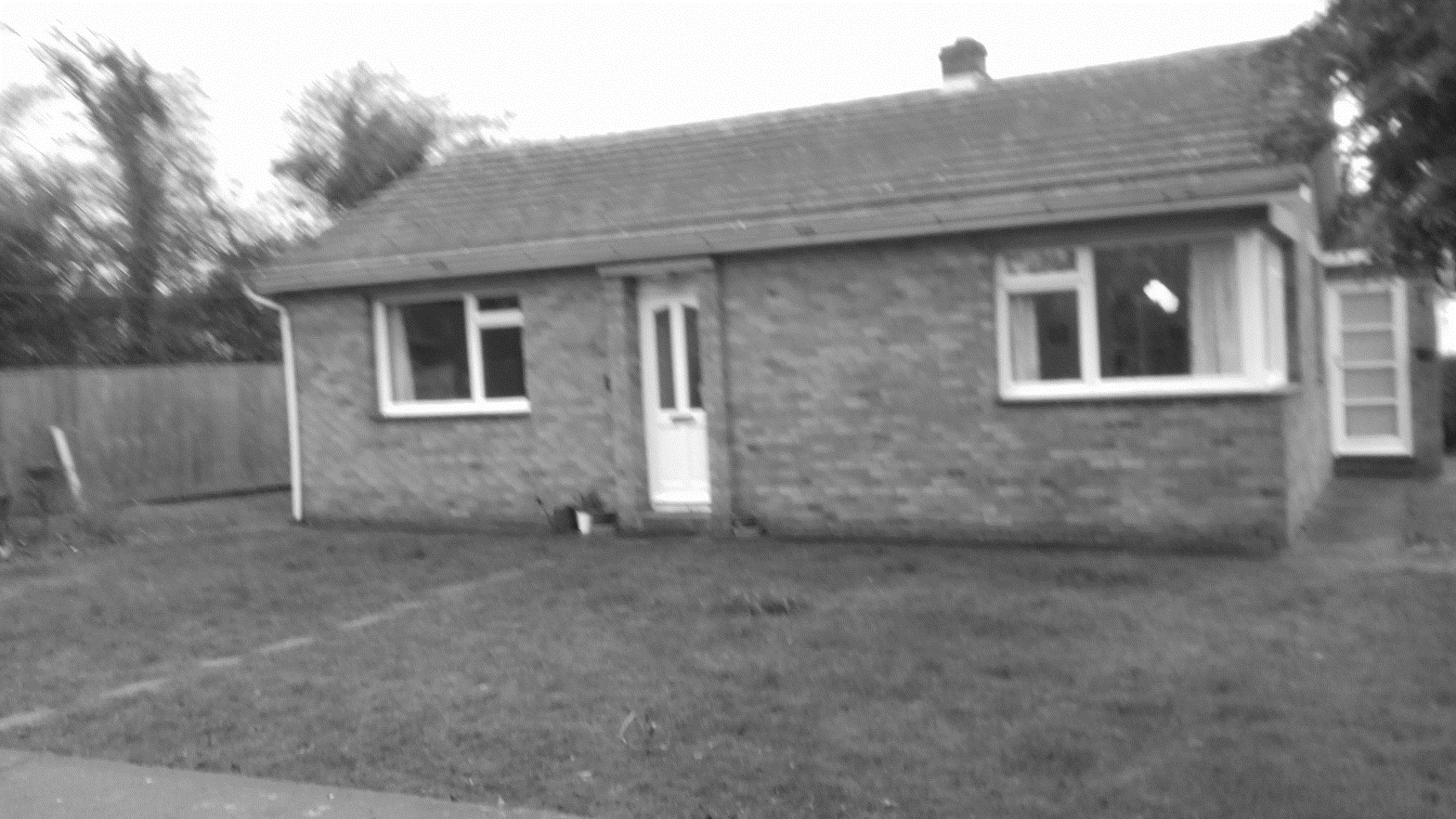Alfred Smith
Alfred sitting in front of the his home –the World War 1 army hut in Station Rd. Notice the condition of his shoe.
Alfred Smith was a remarkable man of many parts. He was born in Grimsby in 1872 and started his working life at Grimsby General hospital where he studied pharmacy and dentistry before moving to London to take up the study of bacteriology in addition. Now his real life’s work began; he was chosen to travel to Germany to study with the great Roentgen, the discoverer of X-rays. After a year or so, in 1897, Alfred accompanied Roentgen to introduce the use of X-rays to Britain. He became one of a small band of X-ray pioneers in this country and in 1906 he took charge of the Dispensing and X-ray departments of the Coventry and Warwickshire Hospital. At this stage X-rays were considered to be nothing short of a miracle that would bring incalculable benefits to many thousands of people. No-one suspected that it could also be dangerous and the X-ray pioneers were exposed to many hours of radiation as part of their work, often using themselves as guinea pigs. By 1913 Alfred had contracted what came to be called X-ray dermatitis. Of course, it proved to be incurable and Alfred was one of the eighteen early workers with X-rays who suffered lingering, painful deaths. Alfred himself was stoical about his condition – when a newspaper reporter who interviewed him in his last year of life (1932) wanted to describe him as a “hero” his response was “cut out the sob stuff, we worked in ignorance and we suffered for it. That’s all that can be said about it.”
His condition gradually deteriorated and by 1918 he had spent four-and-a-half-years in a hospital bed, undergone 17 operations, lost his right leg and become partially blind. By this time all his savings had gone and everything he owned of any value, including his precious X-ray equipment had been sold. Absolute poverty , except for a small pension from the Carnegie Hero Trust, appeared to be his family’s lot.
For some undisclosed reason Alfred and his wife, at some time in the mid twenties decided to move back to Lincolnshire and having tried various locations in the county ended up living in an old army hut which still stands in Legbourne and where they decided to set up a small poultry farm drawing on Alfred’s knowledge of poultry keeping (a man of many parts !). Something must have gone wrong with this venture – perhaps Mrs Smith found the work too much for her – because they moved out of Legbourne into a tumble down cottage in Carlton.
In Carlton amazingly Alfred re-discovered an ability to build radio sets ( a man of many parts!) – “the wireless” was a relatively new invention at the time. After he had made a few for local people a prominent citizen of Louth, Alderman Maxey called on Alfred to order one and was appalled to see the conditions in which the Smiths were living. “There was a table, a chair and an old box in the room and that was all “, he recalled. He heard their story and was deeply moved that this man whose life’s work had benefitted the lives of so many was living in such circumstances. He contacted a national newspaper and the subsequent article resulted in money gifts pouring into the appeal fund he had set up such that in 1929 it could finance the building of a bungalow in Station Rd. Legbourne. It still stands and still bears the name Alfred chose - “Maxeymum”.
He spent his last few months in bed, unable to even turn over without help. His life became just a matter of waiting for the end which came on January 28th 1933. He was buried in Scartho Cemetery on February 1st. He was survived by his wife and seven year old Alec who became an electrician and lived and worked in Legbourne until his death twenty years ago.
Dinah Towle
A TRAGIC DEATH IN LEGBOURNE
THIS REPORT APPEARED IN THE LOUTH AND NORTH LINCOLNSHIRE ADVERTISER ON
JUNE 17th 1871
On Tuesday last, about half past twelve o’clock, as a young woman named Dinah Towle, wife of Robinson Towle, a carpenter residing at Little Cawthorpe was taking her husband’s dinner, he being employed on the Kenwick Estate, a violent thunderstorm took place, during which she was struck by lightning while in the middle of a field on the carriageway from Legbourne to Kenwick and was killed on the spot. A labourer who was in the field noticed the deceased on the road, and shortly afterwards saw her lying on the ground. Suspecting the nature of the accident, he at once raised the alarm, and one of the first to arrive on the spot was the deceased’s husband, but she was then quite dead. The body was removed and an inquest held in the evening at the Royal Oak Inn, Little Cawthorpe by Thos Sharpley Esq. M.D. Coroner. From the evidence of F.S. Tate Esq. Surgeon, who had made an examination of the body it appeared that he saw the deceased shortly after she fell. He found the dress round her neck singed, the chemise partially burnt, as also one of her stockings. One of the boots which were heavily nailed, was torn open; and there were marks of burning on the chest, abdomen, right thigh and left leg, her garter being severed in two. Death had no doubt been caused by a flash of lightning which had struck her. The jury returned a verdict in accordance with the above facts. The coroner remarked that this was the first inquest to be held during the thirteen years he had held his office. Deceased leaves four motherless children to deplore her loss.
THE ADVERTISER WAS THE LOCAL NEWSPAPER BETWEEN 1859 AND 1920.
Dinah, aged 31years, was buried in Little Cawthorpe on 22ND June but the location of her grave is not known – it is unlikely to have had a permanent marker. Nor do we know the fate of the children – perhaps the wider family was able to take them on or they could have been taken into the workhouse in Louth – four children, probably all under the age of ten, would have been difficult for a working father to cope with. Much of the workhouse still stands as part of Louth County Hospital.
THINGS ARE NOT ALWAYS WHAT THEY APPEAR TO BE
The top photograph below appears to show the conventionally brick built bungalow that stands on Reston Road near the Queen’s Head corner. The second photo shows a prefab and one just like it stands inside the brickwork shown in the first photo. It is the much loved and cosy home of Mrs Nora Blanchard who has lived there since 1955.
Prefabricated bungalows were part of the effort to solve the national housing crisis in the immediate post war years. There was a council housing programme at the same time but prefabs could be manufactured in factories and assembled on site by mainly unskilled labour at a time when there was a general shortage of skilled labour after the war. The largest concentrations of prefabs were where German bombing had done most damage – the big industrial cities - London especially.
Prefabs were quite remarkable; a tremendous effort went into the design in order to make best use of the space and to provide a massive upgrade in the standard of working class housing in Britain – much more so than standard council housing. The plan below shows the basic lay-out of the rooms but it does not show that they came with a fridge, a cooker, a baxi water heater for laundry and a back boiler behind the living room fireplace to provide constant hot water and warm air ducted to the bedrooms. There was also a bathroom, an indoor toilet and electrical sockets, two in the kitchen, two in the living room and one in each of the bedrooms. Electricity was such a novelty that the government produced a booklet of guidance on its use.
The designers also understood that the first tenants would be likely to have little furniture, if any and it was in short supply anyway so they built in as much furniture as possible – cupboards, shelves, wardrobes and fold down tables – caravan style. Some prefabs even came with pots and pans. All this for the equivalent of between 70 and 85 pence a week – and they were only expected to be needed for 10 to 15 years.
The Blanchard prefab ( a model known as Uniseco) was first assembled on a site in Essex but after serving its stop gap role it was bought from Essex County Council by Ron and Nora, duly dismantled and transported to Legbourne where it was re-assembled by the sweat of their brows on what had been Ron’s father’s veg patch. It had been delivered with full assembly instructions but minus cooker, fridge and boiler for which a refund was paid.
The bungalow gained its present appearance in stages – a replacement kitchen was added and the original converted into a dining room. The brick skin came next then the pitched roof. Last of all Ron removed the built-in wardrobes from bedroom one, as shown in the plan, and transferred the lavatory to the bathroom to create a third bedroom just big enough to accommodate Mrs Blanchard senior. This transformation took several years for not a penny of the costs was borrowed – it was all paid for from savings.
Of the 7 prefabs re-erected in Legbourne, 6 were bricked-round and 4 still stand.




